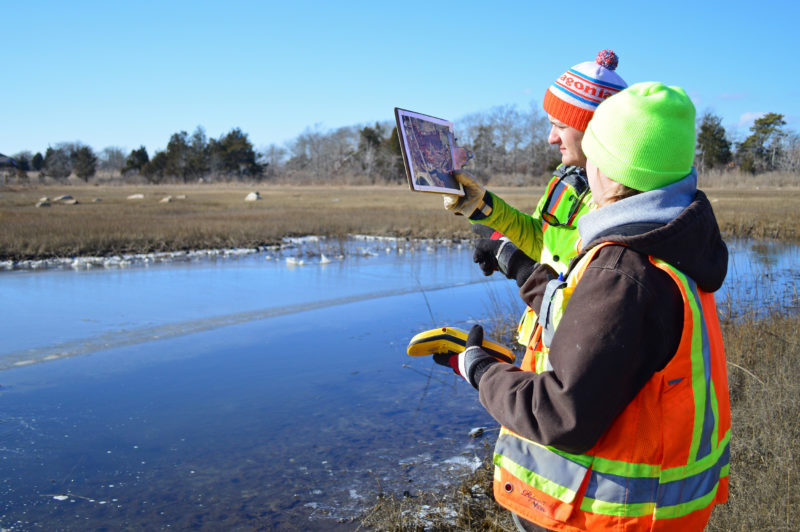Coalition keeps an eye on region’s protected land with annual winter monitoring
As an accredited land trust, the Coalition has protected a lot of land around Buzzards Bay – over 8,300 acres to date. These acres of forests, wetlands, and streams from Westport to Falmouth will never be developed into homes, roads, or strip malls.
When land is protected for conservation, it’s supposed to stay in a natural state forever. But how do we know that this land will always remain protected? Every year, the Coalition monitors thousands of acres of conservation land, a key part of our work to ensure that the land we protect always stays that way.

Every year, the Coalition monitors thousands of acres of conservation land across the region – a key part of our work to ensure that the land we protect always stays that way.
Protected land includes more than town parks, state forests, and conservation areas like the Coalition’s public reserves. Much of it is privately owned, protected using a tool called a conservation restriction. These voluntary legal agreements between a land owner and a land trust (like the Coalition) permanently protect private lands like woods, farms, shorelines, and cranberry bogs from development.
Conservation restrictions allow land owners to protect their land forever while still keeping ownership of it. Once a conservation restriction is finalized and recorded, it’s permanent – even if the land owner sells or passes down the land to a new owner.
The Coalition currently holds or co-holds 42 conservation restrictions on more than 2,300 acres of land. As part of our responsibility, we monitor all 42 of these properties on an annual basis. Monitoring usually happens in winter, when trees are bare and we can see more of the land. This yearly monitoring cycle ensures that land owners are following the terms of their conservation restrictions.
We just completed our annual review of conservation restrictions for 2018-19, and we found no violations on any of the 42 protected properties. In previous years, common violations have included things like dumping or a neighbor encroaching on a property line. If any violations are ever found, we work one on one with the land owner to help them solve the issue.
For most people, conservation restrictions are a hidden aspect of land conservation. But this behind-the-scenes work is a crucial component of the Coalition’s efforts to conserve the forests, streams, and wetlands that protect clean water.
As our monitoring shows, these responsible land owners are doing their part to take care of their land – and we’re dedicated to keeping a watchful eye on these lands as part of our work to Save Buzzards Bay.